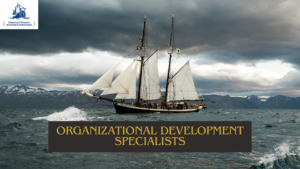Aligning Organizational Cultures for Acquisition Success
- Home
- Buying a Business
- Aligning Organizational Cultures for Acquisition Success
Aligning Organizational Cultures for Acquisition Success
In the complex world of mergers and acquisitions (M&A), financial analyses and strategic synergies often take center stage. However, the softer element of corporate culture plays a pivotal role in determining the ultimate success or failure of these ventures. Aligning organizational cultures between acquiring and target companies is a critical, yet frequently overlooked, aspect of the M&A process. This article explores the essential role of cultural assessments, strategies for cultural integration, the financial stakes of getting it wrong, and real-world success stories that illuminate the path to harmonious and profitable integrations.
1. The Role of Cultural Assessments in Identifying Compatibility
- Understanding the Layers: Cultural assessments delve into the values, beliefs, and practices that define an organization’s way of working. These assessments can uncover potential conflicts that might not be evident from a surface-level analysis.
- Tools and Techniques: Surveys, interviews, and focus groups are among the tools used to gauge cultural compatibility. Advanced analytics can also play a role in mapping cultural attributes between companies.
- Impact on Integration Planning: Insights from cultural assessments inform strategic decisions in the integration process, helping to align leadership styles, communication strategies, and operational practices.
- Predictive Value for Success: A thorough cultural assessment can serve as a predictive indicator of post-acquisition integration challenges and successes, guiding more informed decision-making.
2. Strategies for Integrating Diverse Corporate Cultures
- Establishing a Common Vision: A shared vision for the future is the cornerstone of successful cultural integration. This vision should reflect a blend of the best elements from both companies’ cultures.
- Communication is Key: Transparent, consistent, and two-way communication helps manage expectations and reduce uncertainty among all stakeholders.
- Cultural Champions: Identifying and empowering cultural champions within both organizations can facilitate smoother integration. These individuals act as ambassadors for the integration process, promoting the new shared culture.
- Training and Development: Programs designed to bridge cultural gaps can foster understanding and cooperation among employees from different corporate backgrounds.
3. The Financial Implications of Cultural Misalignment
- Turnover Costs: Cultural clashes can lead to increased turnover, with significant costs associated with recruiting, hiring, and training replacements.
- Lost Productivity: Misalignment can cause confusion and reduce employee engagement, leading to drops in productivity that directly affect the bottom line.
- Brand and Reputation Risk: Public perception of a failed integration can damage brand equity, impacting customer loyalty and future revenue.
- Case for Investment: Investing in cultural alignment is cost-effective compared to the financial risks of neglecting cultural integration.
4. Case Studies of Successful Cultural Integrations
- Tech Titan Merger: A major tech merger embraced a proactive approach to cultural integration included widespread employee engagement initiatives, resulting in minimal turnover and a significant increase in market share.
- Financial Services Fusion: A financial services merger where cultural assessment tools were used to effectively map out integration strategies, leading to a successful merger with reported consecutive quarters of profit growth post-integration.
- Manufacturing Merger: A manufacturing sector merger where the emphasis on maintaining operational continuity alongside cultural integration led to enhanced production efficiency and revenue growth.
The path to successful M&A goes beyond mere financial and operational integration; it requires a deep and thoughtful alignment of organizational cultures. As evidenced by the strategies outlined and the case studies presented, cultural alignment can significantly impact the success of mergers and acquisitions. By prioritizing cultural assessments, employing robust integration strategies, understanding the financial implications of cultural misalignment, and learning from successful precedents, companies can navigate the complex waters of M&A with greater assurance and achieve enhanced financial performance. Aligning organizational cultures is not just about avoiding conflict; it’s about unlocking the full potential of combined entities to create a cohesive, innovative, and high-performing organization.





